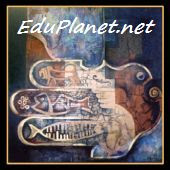What are the main Halakhic Midrashim?
taken from http://www.faqs.org/faqs/judaism/FAQ/03-Torah-Halacha/section-27.html
Answer:
Mekhilta. The Mekhilta is an important commentary on Exodus. It is
essential to note that there are two separate versions of this midrash
collection. One is "Mekhilta de Rabbi Ishmael" and the other is
"Mekhilta de Rabbi Simeon ben Yohai". The former is the one that most
Jews use today, but the latter is the text that was used by many
medieval Jewish authorities. While the latter (ben Yohai) text was
popularly circulated in manuscript form from the 11th to 16th
centuries, it was lost for all practical purposes until it was
rediscovered and printed in the 19th century.
* Mekhilta de Rabbi Ishmael. This is a halakhic commentary on
Exodus, concentrating on the legal sections, from Exodus 12 to 35.
It derives halakha from Biblical verses. This midrash collection
was redacted into its final form around the 3rd or 4th century CE;
its contents indicate that its sources are some of the oldest
midrashim, dating back possibly to the time of Rabbi Akiva. The
midrash on Exodus that was known to the Amoraim is not the same as
our current mekhilta; their version was only the core of what
later grew into the present form.
* Mekhilta de Rabbi Simeon ben Yohai. Based on the same core
material as Mekhlita de Rabbi Ishmael, it followed a second route
of commentary and editing, and eventually emerged as a distinct
work. The Mekhlita de Rabbi Simeon ben Yohai is an exegetical
midrash on Exodus 3 to 35, and is very roughly dated to near the
4th century CE.
Sifra. A comprehensive halakhic commentary on Vayikra (Leviticus),
which works through all of Leviticus verse by verse. References in the
Talmud to the Sifra are ambiguous; It is uncertain whether the texts
mentioned in the Talmud are to an earlier version of our Sifra, or to
the sources that the Sifra also drew upon. However, we do know that
the references to the Sifra from the time of the Geonim and after are
to the text that is extant today. The core of this text developed in
the mid-3rd century as a critique and commentary of the Mishnah,
although subsequent additions and editing went on for some time
afterwards.
* Sifre Numbers. A mainly halakhic midrash on Bamidbar (Numbers). It
also includes a long haggadic piece in sections 78-106. References
in the Talmud, and in the later Geonic literature, indicate that
the original core of Sifre was on Numbers, Exodus and Deuteronomy.
However, transmission of the text was imperfect, and by the middle
ages, only the commentary on Numbers and Deuteronomy remained. The
core material was redacted around the middle of the 3rd century.
* Sifre Zutta (The small Sifre). A Halakhic commentary on Bamidbar
(Numbers). The text of this midrash is only partially preserved in
medieval works, while other portions were discovered by Solomon
Schecter in his research in the famed Cairo Geniza. It seems to be
older than most other midrash, coming from the early 3rd century.
Terminology alert: Maimonides refers to this work as Mekhlita (de
rabbi Ishamel) in his Sefer Ha'Mitzvot.
* Sifre Deuteronomy. An exegetical and halakhic midrash on
Deuteronomy. Redacted near the late 3rd century.
Midrash Tannaim (also known as Mekhilta on Deuteronomy). This was a
Halakhic midrash on Deuteronomy, of which only fragments exist today.
Only portions of it can be reconstructed from quotes in other extant
works, including Genizah fragments.

No comments:
Post a Comment